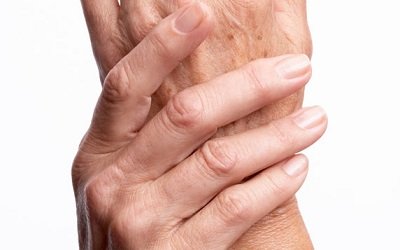Inside BENEO’s new pulse plant: pioneering sustainable protein from faba beans
Osteoporosis, characterized by low bone mass with micro architectural deterioration of bone tissue leading to enhanced bone fragility, is three times more common in Indian population than occurred in other countries. One in two women and one in five men over the age of 50 in the world will break a bone, mainly because of osteoporosis.
Osteoporosis has no symptoms. The first clue may be seen if you have an X-ray for another reason, or if you fracture a bone. Whether you have osteoporosis or just want to build strong bones for the future, there are several things you can do to maintain your bones.
Maintain healthy weight:
Carrying around extra pounds strains your joints, leading to problems like arthritis and persistent joint pain. Osteoarthritis is the most common joint disorder with symptoms in the hands, knees, hips, back, and neck. Clearly, being overweight increases the load placed on the joints such as the knee, which increases stress and could possibly accelerate the breakdown of cartilage. This increased weight and increased wear and tear on the joints means more hip replacements and more knee replacements.
Knee and hip replacement surgeries are most often performed on the elderly, since osteoarthritis (OA) is a disease primarily caused by aging. But obesity is a major risk factor for arthritis, and research has shown that younger people increasingly need joint replacement surgery.
Even small amounts of weight loss reduce the risk of developing knee OA. Preliminary studies suggest weight loss decreases pain substantially in those with knee OA. Just as carrying extra weight strains and damages the joints, dropping those pounds will reduce the strain, thereby reducing the risk of arthritis. Even losing just a small amount of weight can improve joint health and function and reduce joint pain.
Bone and muscle strengthening exercises can help to promote joint health, so if your joints are still healthy, try these exercise like Walking, running, or jogging, playing tennis, using exercise machines like elliptical and stair-climbers, aerobics, hiking, dancing or doing yoga, Pilates, or tai chi and Swimming. Lower-impact exercises those that don’t jar the joints, such as swimming are better choices for people who already have joint pain or who are very overweight.
Preventing obesity will help to prevent arthritis and joint pain. But it’s never too late to get in shape and lighten the load on your joints. Just reach your goal weight safely by protecting those joints in the process.
Foods that Reduce Bone Density:
Certain foods and nutrients can reduce bone density and increase your risk for osteoporosis. You probably know that calcium and vitamin D are needed to build strong bones. But what you may not know is that there are certain elements in your diet that can actually reduce bone density, increasing your risk for osteoporosis.
Too Much Protein May Lower Bone Density- You need protein to build strong bones, but when you eat too much protein, your body produces chemicals called sulfates that can cause calcium to leach out of the bones. This effect on bones is more likely to occur with animal protein than vegetable protein.
Cut out the salt- Salt is thought to speed up the body’s loss of calcium. Most of us consume 9g of salt a day, but the recommended limit is 6g, which is just a teaspoonful. Don’t add salt to your food and look at food labels to help you cut down. Avoid foods that contain 1.5g of salt per 100g (or 0.6g of sodium) or more. Crisps, ham, cheese, cooking sauces and processed foods such as pies, pizza and soups are all high in salt.
Drink prudently- Too much alcohol, tea, coffee, cola and other fizzy drinks reduce the amount of calcium you absorb and weaken bones.
Diet for healthy bones:
A diet low in fruits and vegetables and high in animal protein and carbohydrates, will tend to result in mild acidosis which, over time, can contribute to significant bone loss. Neutralizing an acid-producing diet, which can be done by eating fruits and vegetables, may be an important key to reducing bone loss while aging.
Since many nutrients are important for bone health, it is important to eat a well-balanced diet containing a variety of foods, including grains, fruits and vegetables, nonfat or low-fat dairy products or other calcium-rich foods, and meat or beans each day. Adequate daily dose of calcium can be as simple as eating dairy products like cheese, milk and yogurt, as well as plant-based foods such as turnip greens, broccoli, tofu and calcium-fortified foods like orange.
Eating a well-balanced diet can be tricky when you are trying to keep your bones healthy. However, getting the recommended amount of calcium each day to offset any loss of calcium caused by any other foods you eat will go along way to preventing bone loss.
Your body needs vitamin D to help it absorb calcium. Vitamin D is found in fish, fortified spreads and cereals, and egg yolks. Your body also makes its own vitamin D when you’re exposed to sunshine.
About the author
Dr Chandrashekar P is an Orthopaedic Surgeon with keen interest in Joint Replacement and Arthroscopy surgeries of Knee, Shoulder and Hip with Sakra World Hospital, Bangalore. Before joining that he was working in Fortis Hospitals from 2010 and continued until January 2014. He has earned recognition for performing various types of complex Joint surgeries which also includes Joint preservation & Replacement surgeries.

